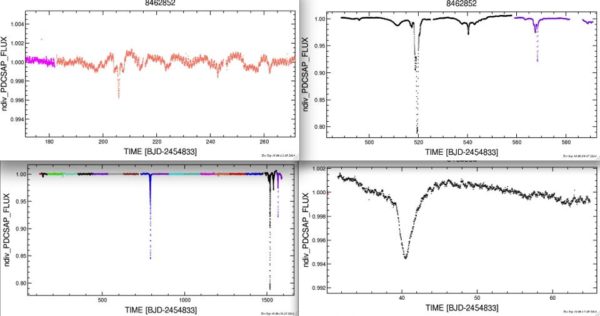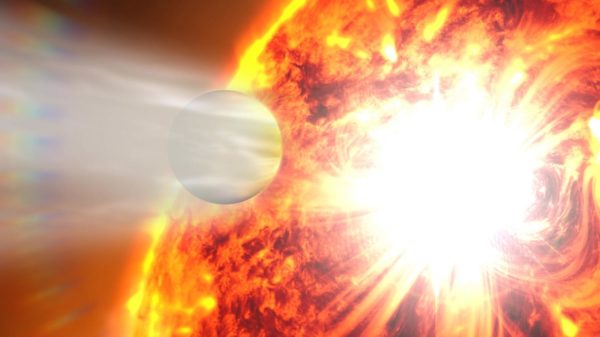"As far as I can tell, every telescope that can look at it right now is looking at it right now." -Matt Muterspaugh
Earlier this decade, the Kepler mission became the most successful planet-finding endeavor of all time, turning up thousands of new worlds by measuring the transit data of some 150,000 stars. When planets passed in front of their parent star, they blocked a tiny fraction of their light, leaving behind an imprint of a periodic dimming signal. But one star dims differently from all the others.
 Different steps in the Kepler time series data that show the periodic and aperiodic dimming of KIC 8462852, with incredibly large brightness changes. Image credit: Tabby Boyajian and her team of PlanetHunters.
Different steps in the Kepler time series data that show the periodic and aperiodic dimming of KIC 8462852, with incredibly large brightness changes. Image credit: Tabby Boyajian and her team of PlanetHunters.
KIC 8462852, known as Tabby’s star, has irregular dips of up to 20% in brightness, equivalent to ten times the effect of all the Solar System’s planets combined. What could be causing this? While a few astronomers have proposed alien megastructures, another, simpler explanation might explain it all: a recently devoured planet.


"Boyajian's Star", please.
It's a trap! While everyone is watching tabby dim, that's when the aliens will strike!
We prefer the term "luminously-challenged."
Having opened the posssibilty of stellar light curve modulation by civilizations, these researchers should start thinking about their diplomatic explanation:
https://vvattsupwiththat.blogspot.com/2017/05/trump-epa-director-welcom…